NCLEX-PN Content Review Guide
Document Content and Description Below
NCLEX-PN Content Review Guide,THIS DOCUMENT CONTAIN BEST CONTENT REVIEW FOR PREPARATION OF NCLEX EXAM.GOOD LUCK. NCLEX-PN® is a registered trademark of the National Council of State Boards of Nursi... ng, Inc. This book is solely intended for use as preparation for the Nursing Licensure Examination, NCLEX-PN® examination. It is not a guide to the clinical treatment of clients. Neither the authors nor the publisher shall be responsible for any harm caused by the use of this book other than for its intended purpose. This book is just a small portion of the Kaplan materials available for you to prepare for the NCLEX-PN® exam. This publication is designed to provide accurate information in regard to the subject matter covered as of its publication date, with the understanding that knowledge and best practice constantly evolve. The publisher is not engaged in rendering medical, legal, accounting, or other professional service. If medical or legal advice or other expert assistance is required, the services of a competent professional should be sought. This publication is not intended for use in clinical practice or the delivery of medical care. To the fullest extent of the law, neither the Publisher nor the Editors assume any liability for any injury and/or damage to persons or property arising out of or related to any use of the material contained in this book. © 2017 by Kaplan, Inc. Published by Kaplan Publishing, a division of Kaplan, Inc. 750 Third Avenue, New York, NY 10017 All rights reserved. The text of this publication, or any part thereof, may not be reproduced in any manner whatsoever without written permission from the publisher. This book may not be duplicated or resold, pursuant to the terms of your Kaplan Enrollment Agreement. 10 9 8 7 6 5 4 3 2 1 Kaplan Publishing print books are available at special quantity discounts to use for sales promotions, employee premiums, or educational purposes. For more information or to purchase books, please call the Simon & Schuster special sales department at 866-506-1949. Course ISBN: 978-1-5062-1459-7 Judy Hyland, M.S.N., R.N. Executive DirExecutive Director of Nurector of Nursing Barbara Arnoldussen, M.B.A., R.N. Judith A. Burckhardt, Ph.D., R.N. Barbara Dobish, M.S.N., R.N. Cindy Finesilver, M.S.N., R.N. Pamela Gardner, M.S.N., R.N. Barbara J. Irwin, M.S.N., R.N. Ellen Mahoney, C.S., D.N.S., R.N. Marlene Redemske, M.S.N., M.A., R.N. 3 Table Of Contents Introduction. . . . . . . . . . . . . . . . . . . . . . . . . . . . . . . . . . . . . . . . . . . . . . . . . . . . . . . . . . . . vii Chapter 1: The NCLEX-PN® Examination Unit 1: The NCLEX-PN® Examination. . . . . . . . . . . . . . . . . . . . . . . . . . . . . . . . . . . . . . . . 3 Chapter 2: Kaplan’s Review for the NCLEX-PN® Examination Unit 1: Kaplan’s NCLEX-PN® Course Materials . . . . . . . . . . . . . . . . . . . . . . . . . . . . . . . 11 Unit 2: How to Use Kaplan’s NCLEX-PN® Review Course. . . . . . . . . . . . . . . . . . . . . . . 13 Unit 3: Kaplan’s PN Decision Tree®. . . . . . . . . . . . . . . . . . . . . . . . . . . . . . . . . . . . . . . . . 19 Unit 4: Guide for Test-Takers Repeating the NCLEX-PN® Examination. . . . . . . . . . . . 21 Chapter 3: Safe and Effective Care Environment Unit 1: Coordination of Care . . . . . . . . . . . . . . . . . . . . . . . . . . . . . . . . . . . . . . . . . . . . . 33 Unit 2: Safety and Infection Control . . . . . . . . . . . . . . . . . . . . . . . . . . . . . . . . . . . . . . . 53 Chapter 4: Health Promotion and Maintenance Unit 1: Growth and Development. . . . . . . . . . . . . . . . . . . . . . . . . . . . . . . . . . . . . . . . . . 83 Unit 2: Childbearing—Normal . . . . . . . . . . . . . . . . . . . . . . . . . . . . . . . . . . . . . . . . . . . . 101 Unit 3: Childbearing—Maternal Complications . . . . . . . . . . . . . . . . . . . . . . . . . . . . . . 117 Unit 4: Childbearing—Neonatal Normal. . . . . . . . . . . . . . . . . . . . . . . . . . . . . . . . . . . . 131 Unit 5: Neonatal Complications . . . . . . . . . . . . . . . . . . . . . . . . . . . . . . . . . . . . . . . . . . 139 Unit 6: Reproduction . . . . . . . . . . . . . . . . . . . . . . . . . . . . . . . . . . . . . . . . . . . . . . . . . . . 145 Unit 7: Prevention and Early Detection of Disease . . . . . . . . . . . . . . . . . . . . . . . . . . . 153 Chapter 5: Physiological Integrity 1: Basic Care and Comfort Unit 1: Mobility and Immobility . . . . . . . . . . . . . . . . . . . . . . . . . . . . . . . . . . . . . . . . . . 185 Unit 2: Conditions Limiting Mobility . . . . . . . . . . . . . . . . . . . . . . . . . . . . . . . . . . . . . . 195 Unit 3: Interventions to Promote Comfort. . . . . . . . . . . . . . . . . . . . . . . . . . . . . . . . . . 215 Unit 4: Musculoskeletal Trauma . . . . . . . . . . . . . . . . . . . . . . . . . . . . . . . . . . . . . . . . . . 219 Unit 5: Rest and Sleep Disturbances . . . . . . . . . . . . . . . . . . . . . . . . . . . . . . . . . . . . . . 231 Unit 6: Nutrition . . . . . . . . . . . . . . . . . . . . . . . . . . . . . . . . . . . . . . . . . . . . . . . . . . . . . . 241 Unit 7: Elimination. . . . . . . . . . . . . . . . . . . . . . . . . . . . . . . . . . . . . . . . . . . . . . . . . . . . . 259 Chapter 6: Psychosocial Integrity Unit 1: Coping and Adaptation. . . . . . . . . . . . . . . . . . . . . . . . . . . . . . . . . . . . . . . . . . . 277 Unit 2: Psychosocial Adaptation. . . . . . . . . . . . . . . . . . . . . . . . . . . . . . . . . . . . . . . . . . 299 Unit 3: Psychopathology . . . . . . . . . . . . . . . . . . . . . . . . . . . . . . . . . . . . . . . . . . . . . . . . 301 Unit 4: Chemical Dependency. . . . . . . . . . . . . . . . . . . . . . . . . . . . . . . . . . . . . . . . . . . . 313 Unit 5: Abuse and Neglect . . . . . . . . . . . . . . . . . . . . . . . . . . . . . . . . . . . . . . . . . . . . . . 321 Chapter 7: Physiological Integrity 2: Physiological Adaptation Unit 1: Medical Emergencies . . . . . . . . . . . . . . . . . . . . . . . . . . . . . . . . . . . . . . . . . . . . 327 Unit 2: Fluid and Electrolyte Imbalances . . . . . . . . . . . . . . . . . . . . . . . . . . . . . . . . . . . 355 Unit 3: Alterations in Body Systems. . . . . . . . . . . . . . . . . . . . . . . . . . . . . . . . . . . . . . . 367 Unit 4: Cancer . . . . . . . . . . . . . . . . . . . . . . . . . . . . . . . . . . . . . . . . . . . . . . . . . . . . . . . . 381 Chapter 8: Physiological Integrity 3: Reduction of Risk Potential Unit 1: Sensory and Perceptual Alterations . . . . . . . . . . . . . . . . . . . . . . . . . . . . . . . . 393 Unit 2: Alterations in Body Systems. . . . . . . . . . . . . . . . . . . . . . . . . . . . . . . . . . . . . . . 409 Unit 3: Perioperative Care . . . . . . . . . . . . . . . . . . . . . . . . . . . . . . . . . . . . . . . . . . . . . . 441 Unit 4: Diagnostic Tests . . . . . . . . . . . . . . . . . . . . . . . . . . . . . . . . . . . . . . . . . . . . . . . . 447 Unit 5: Therapeutic Procedures . . . . . . . . . . . . . . . . . . . . . . . . . . . . . . . . . . . . . . . . . . 461 Chapter 9: Physiological Integrity 4: Pharmacological Therapies Unit 1: Blood Component Therapy . . . . . . . . . . . . . . . . . . . . . . . . . . . . . . . . . . . . . . . 475 Unit 2: Intravenous Therapy . . . . . . . . . . . . . . . . . . . . . . . . . . . . . . . . . . . . . . . . . . . . . 477 Unit 3: Medications . . . . . . . . . . . . . . . . . . . . . . . . . . . . . . . . . . . . . . . . . . . . . . . . . . . . 481 Unit 4: Adverse Effects of Medications . . . . . . . . . . . . . . . . . . . . . . . . . . . . . . . . . . . . 573 Introduction Welcome! By using Kaplan Nursing resources, you’ve taken an important step toward passing the National Council Licensure Examination for Practical Nurses (NCLEX-PN®). Our many years of experience indicate that your success on the NCLEX-PN® examination is keyed to two specific factors: your educational background and your exam preparation. The amount and intensity of study you devote will bring about the greatest benefits from these resources. The best results come to those who actively participate in exam preparation. We will show you how the NCLEX-PN® examination works, what you do and don’t need to know, and the smartest way to take the NCLEX-PN® examination. We provide you with data to help you analyze your practice performance and determine where you need to make improvements. We will give you all the help, advice, and encouragement we can—but only you can do the work. Get to know all the benefits that Kaplan Nursing has to offer so you can make the most of your study time. After you complete your resources and take the NCLEX-PN® examination, please tell us how you did. Kaplan’s Research and Curriculum Development Team works hard to ensure that our course materials employ the most effective and innovative teaching methods. In order to evolve and improve, we need your help. Please take a few moments to share your thoughts on how the materials helped you. Thank you in advance for choosing Kaplan for your studies. KAPLAN 750 Third Avenue, New York, NY 10017 Attn: NCLEX Curriculum [email protected] (kaptest.com) [email protected] (nursing.kaplan.com) Our best wishes for an interesting and satisfying nursing career. *NCLEX is a trademark of N.C.S.B.N., Inc. Please note: All Kaplan lectures, web content, and printed and electronic media are the property of Kaplan Nursing and are copyrighted under law. 7 Chapter 1 THE NCLEX-PN® EXAMINATION Units 1. The NCLEX-PN® Examination Have you talked to LPN/LVNs about their experiences taking the NCLEX-PN® examination? If so, they probably told you it was unlike any nursing test they have ever taken. How can that be? Let’s talk in detail about the NCLEX-PN® examination. NCLEX-PN® stands for National Council Licensure Examination for Practical Nurses and is prepared by the National Council of State Boards of Nursing (NCSBN). The purpose of the exam is to determine if you are safe to begin practice as an entry-level practical/vocational nurse. The NCLEX-PN® examination is a test of minimum competency, and is based on the required knowledge and behavior for the entry-level practice of practical/vocational nursing. This exam tests not only your knowledge, but also your ability to make decisions. The NCLEX-PN® examination is a computer adaptive test, which means each test is assembled interactively based on the accuracy of the candidate’s responses to the questions. This ensures that the question you are answering will not be “too hard” or “too easy” for your skill level. The first question will be near the level of minimum competency (also referred to as the passing line). If you answer the question correctly, the next question will be slightly higher in critical thinking. If you miss the question, the next question will be slightly lower. As you answer questions, the compute [Show More]
Last updated: 1 year ago
Preview 1 out of 86 pages
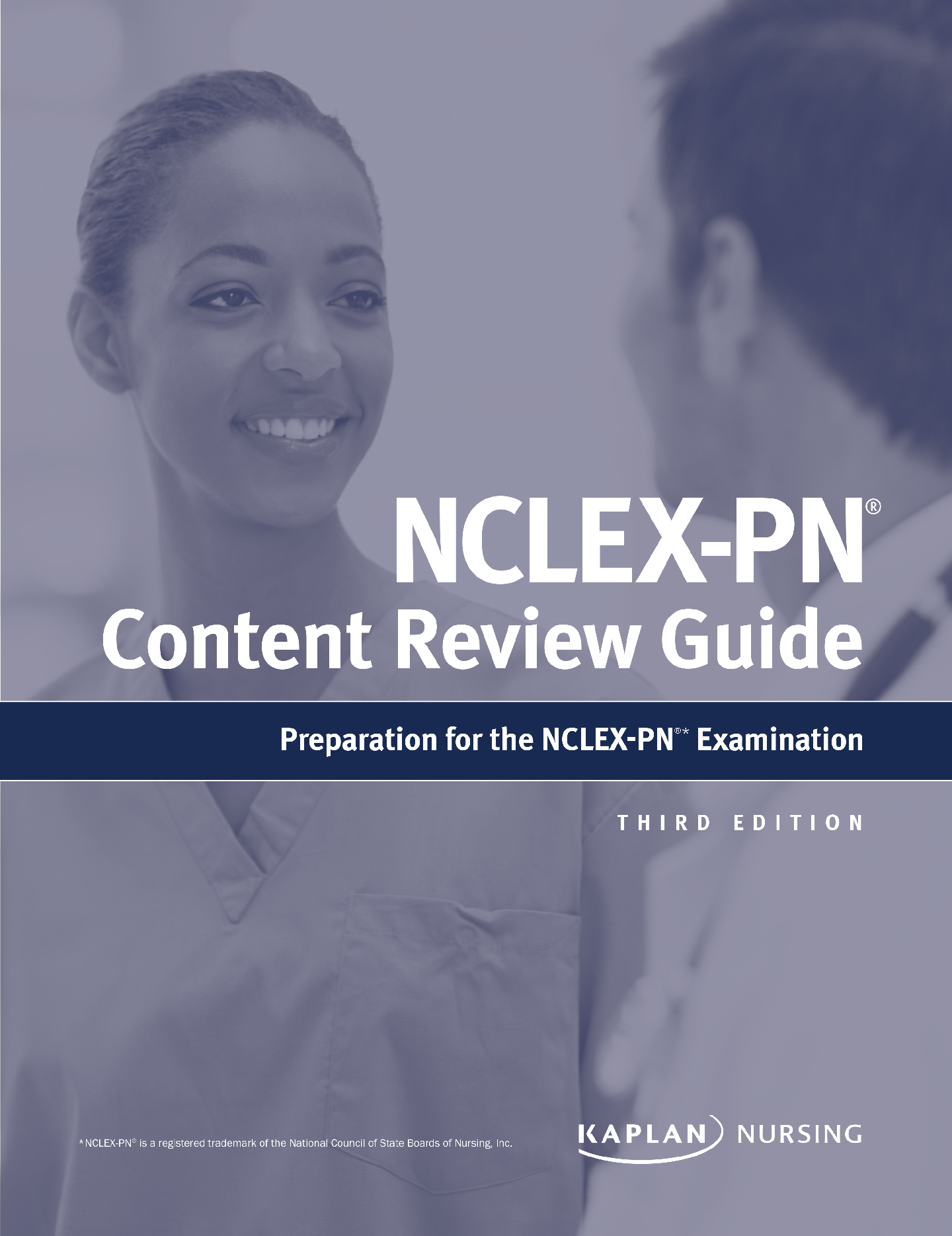
Reviews( 0 )
Document information
Connected school, study & course
About the document
Uploaded On
May 08, 2021
Number of pages
86
Written in
Additional information
This document has been written for:
Uploaded
May 08, 2021
Downloads
0
Views
84

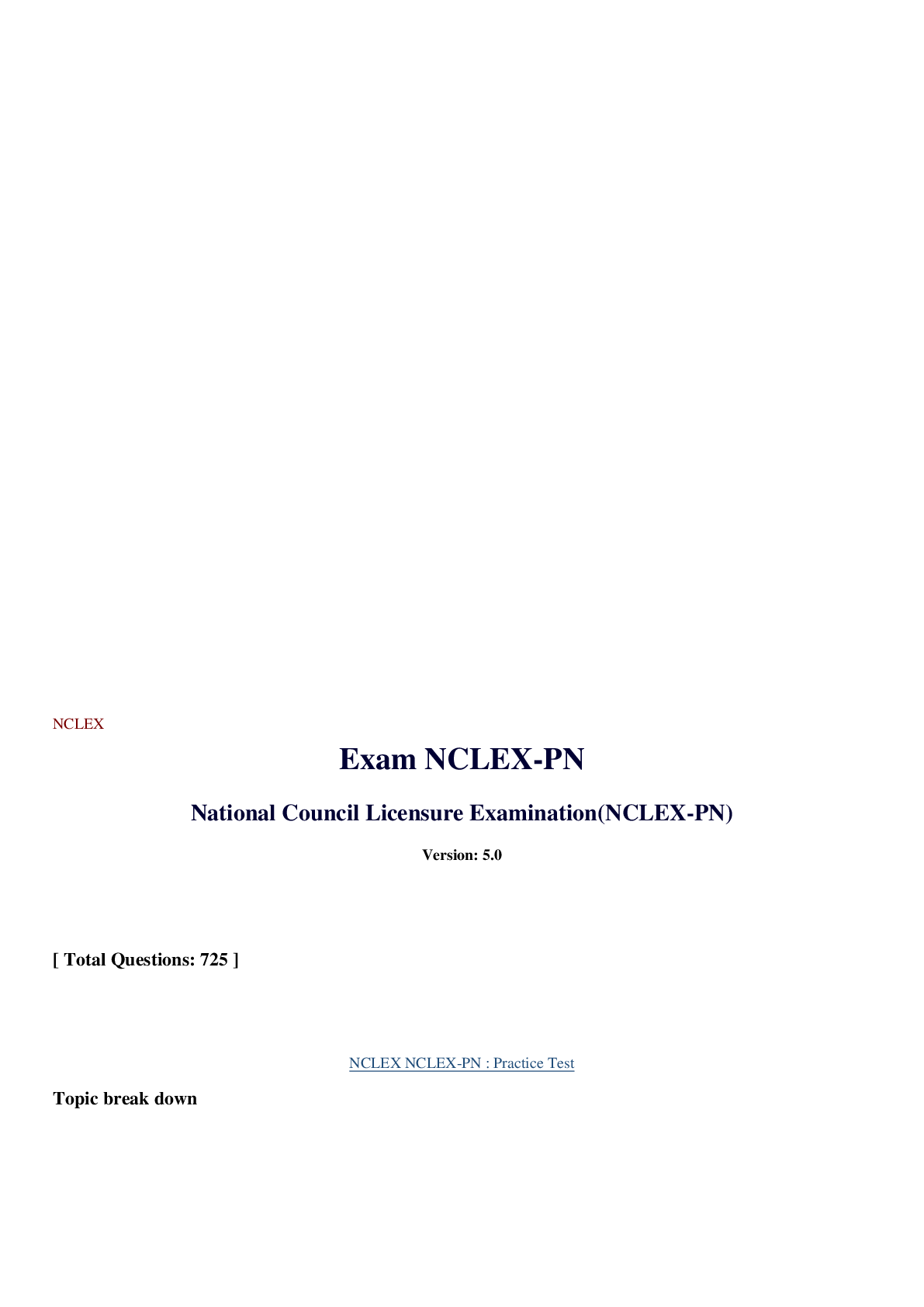

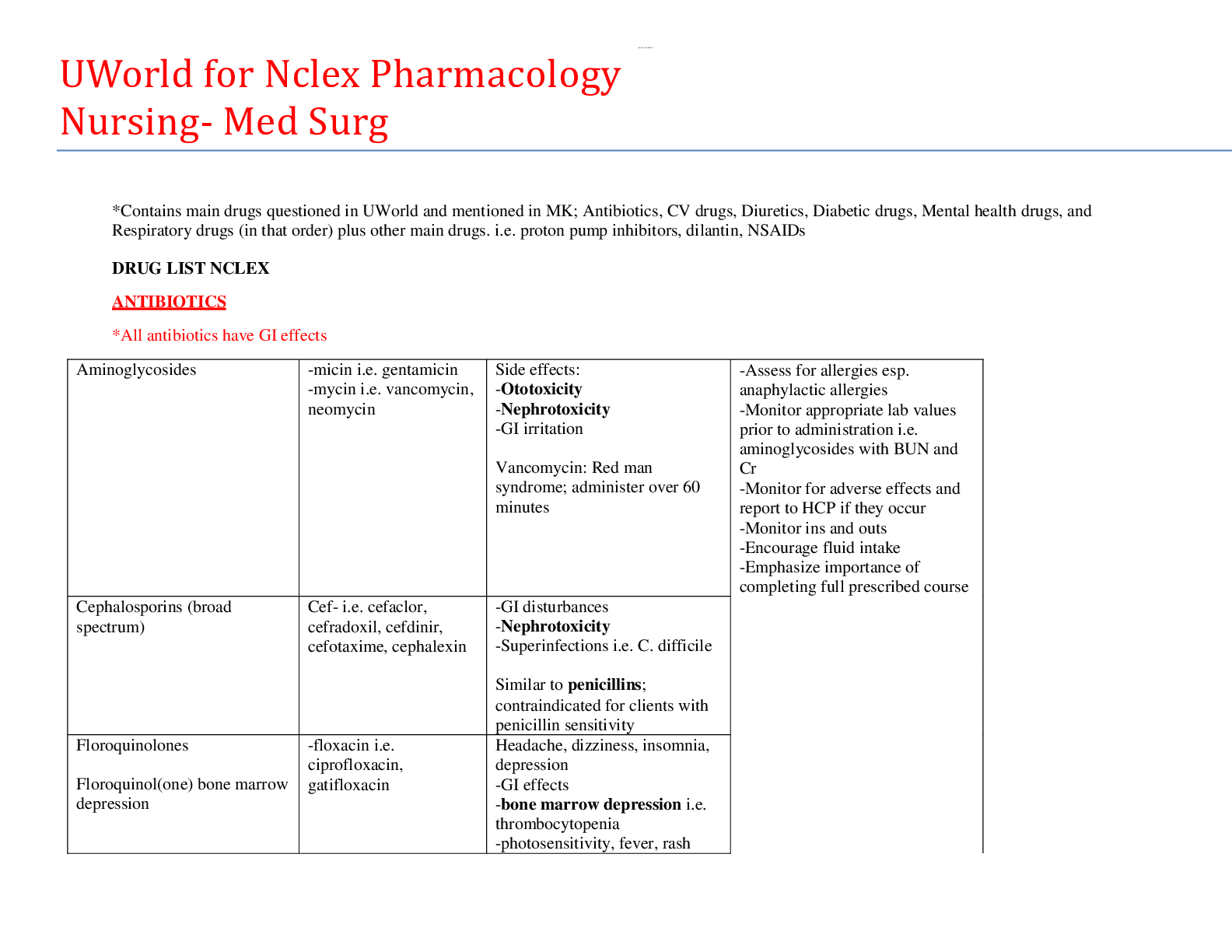

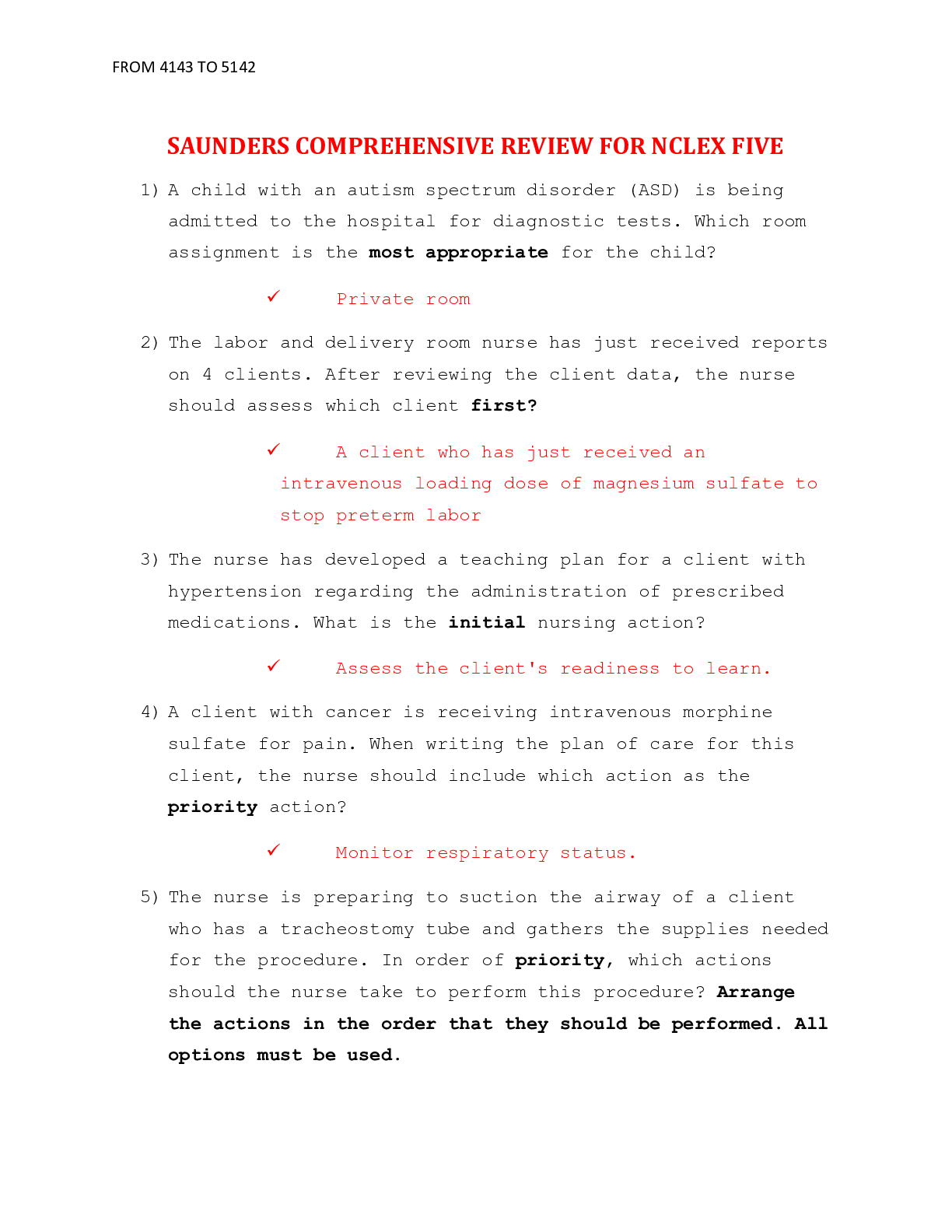
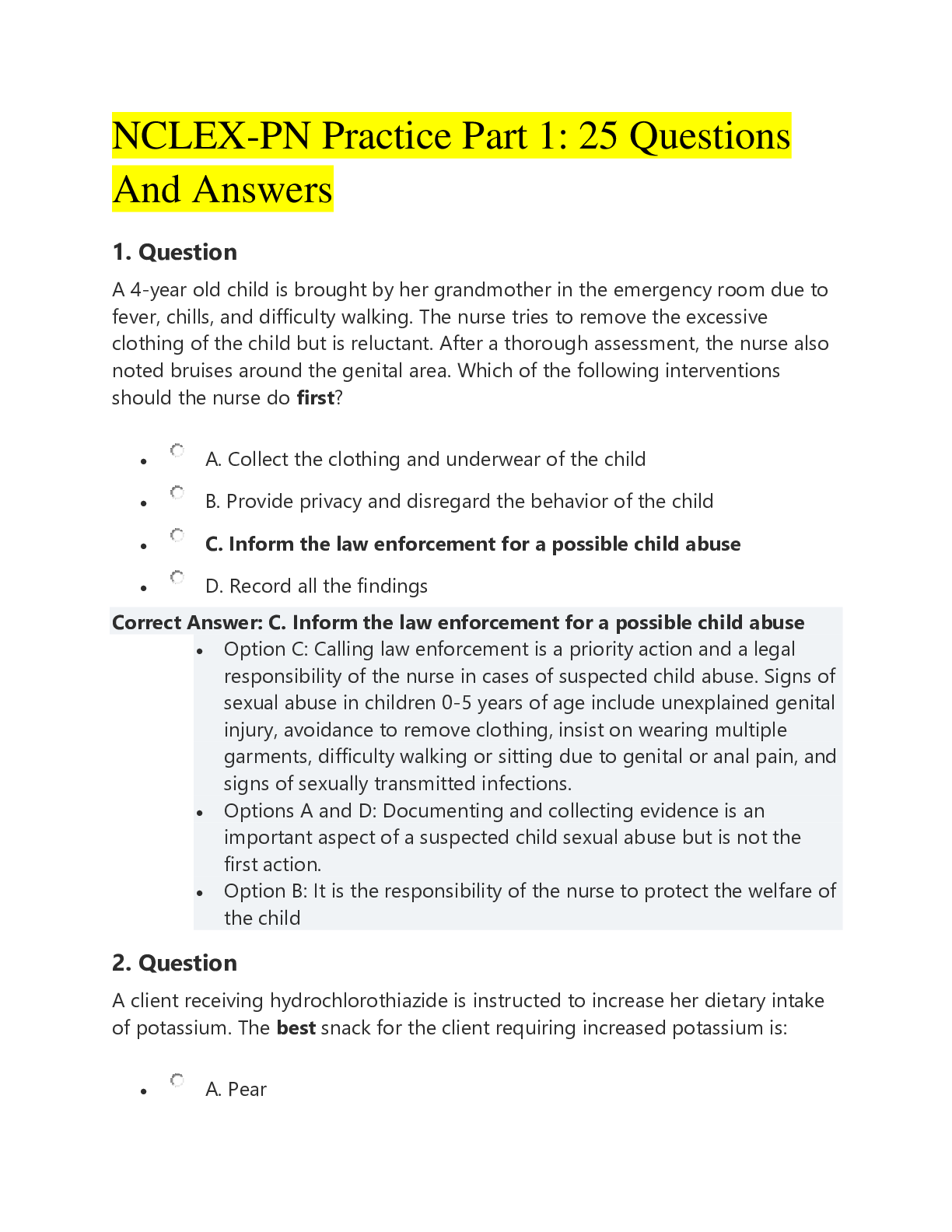
.png)
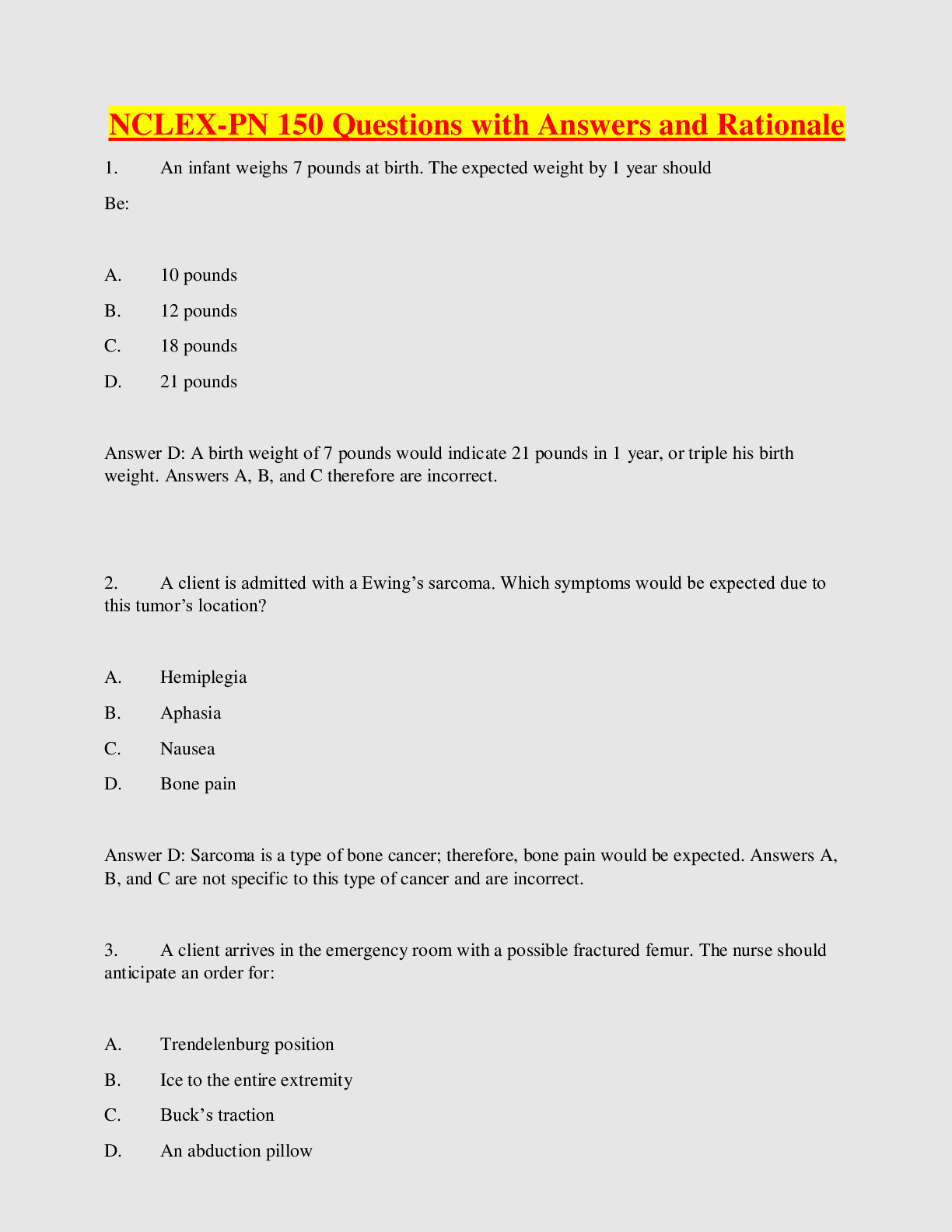


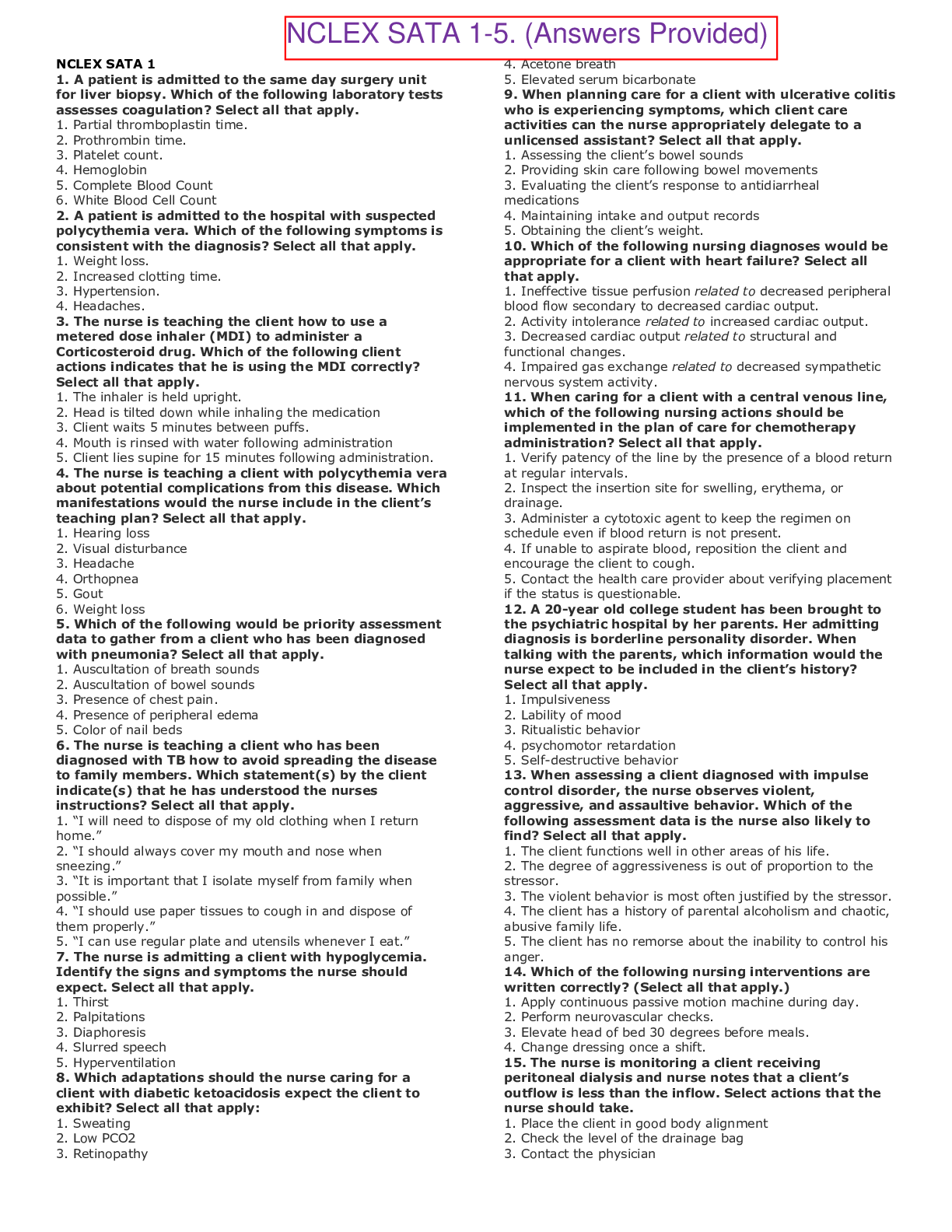
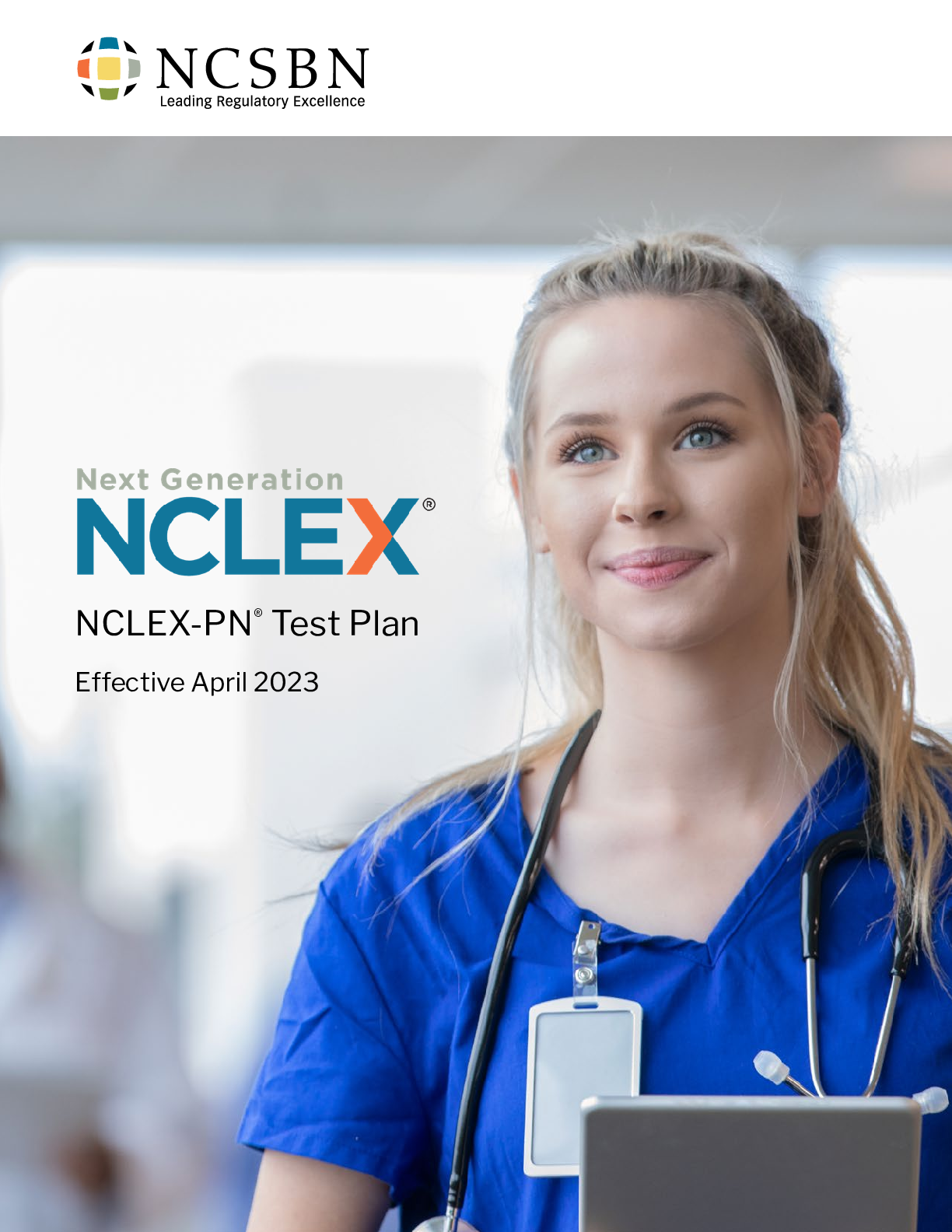

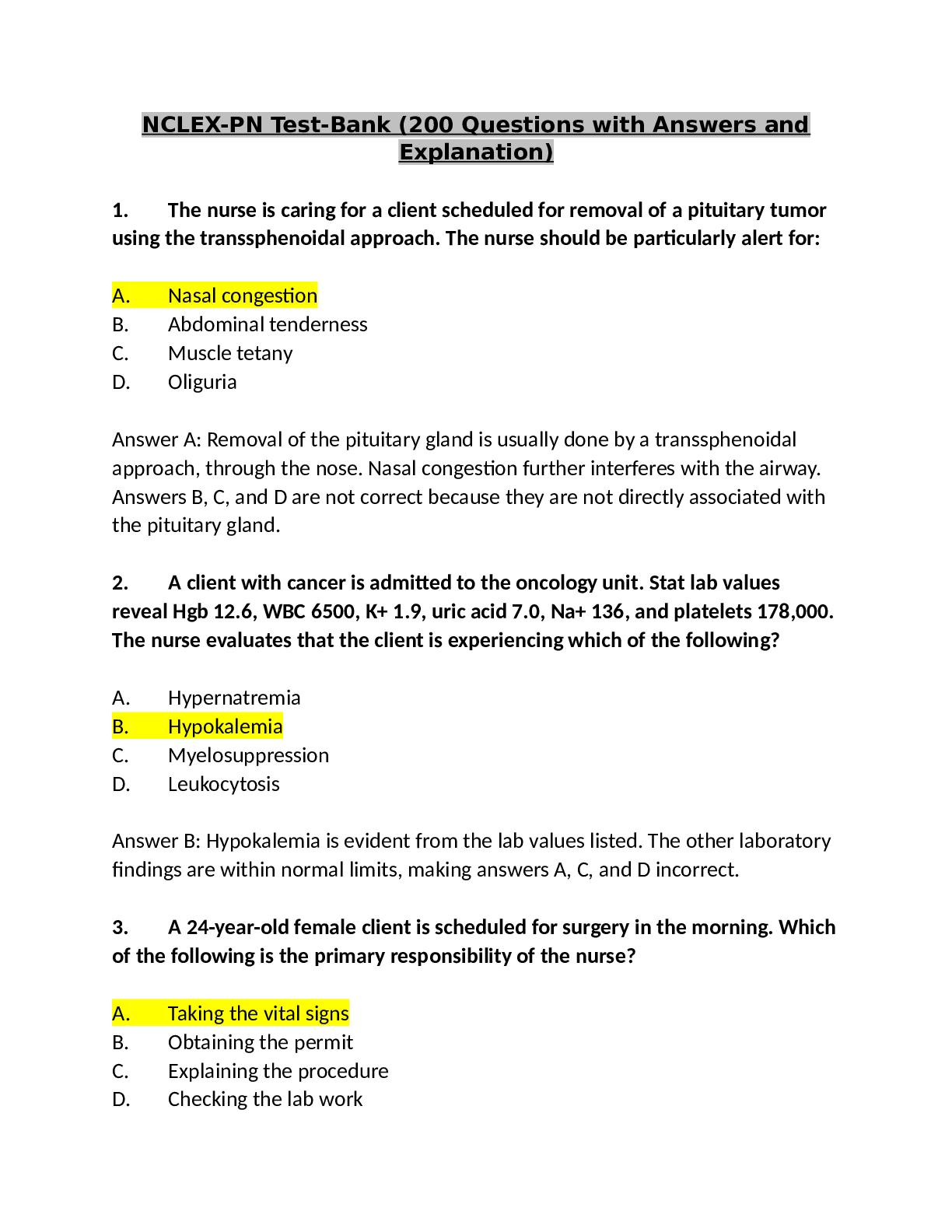

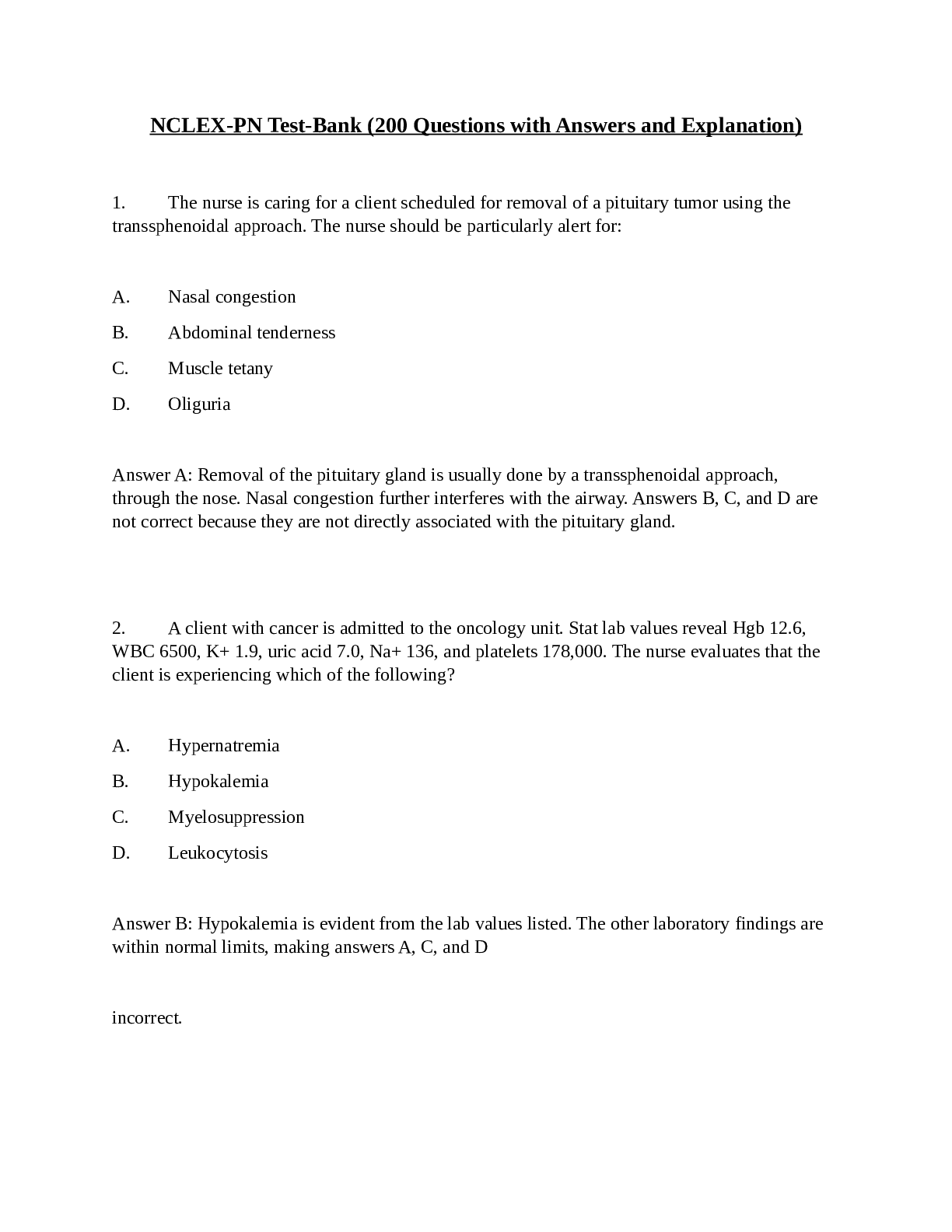
 Latest 2022-2023.png)
.png)

